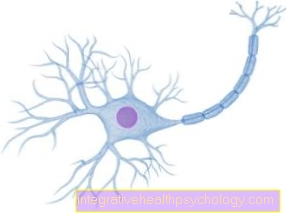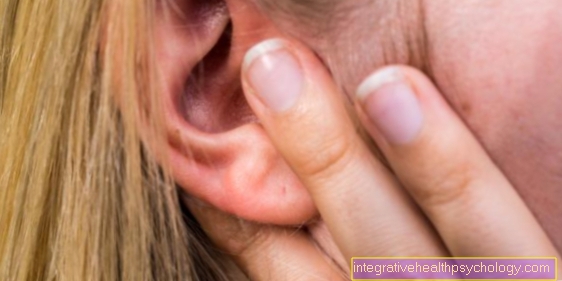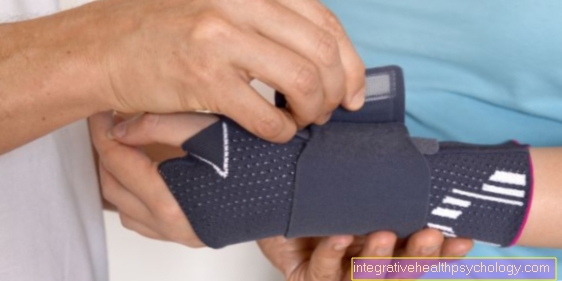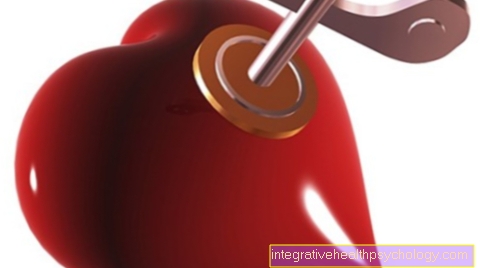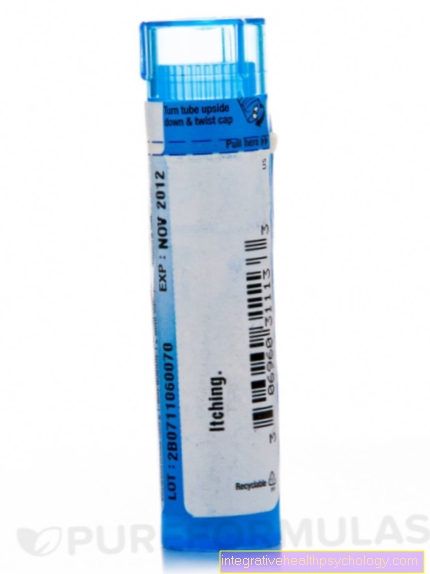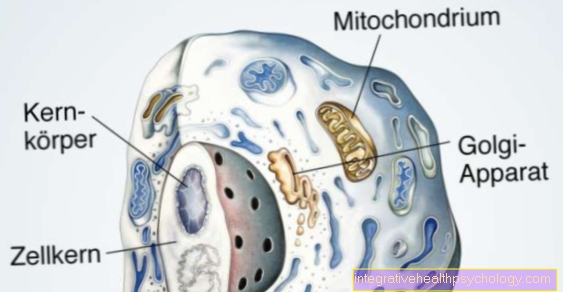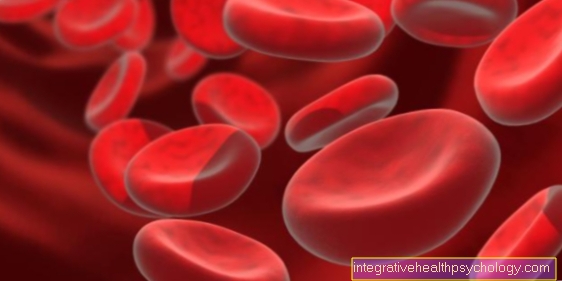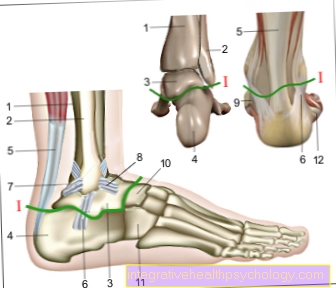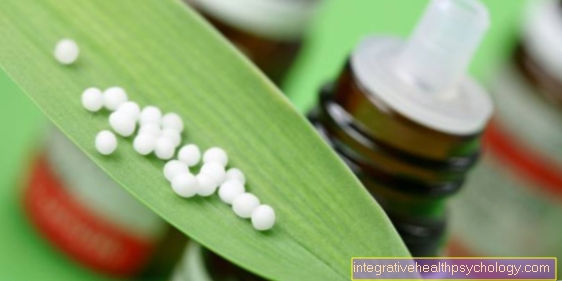How to make dental plaque visible
introduction
To make the plaque on the teeth visible, various food coloring agents in the form of coloring tablets or gels are used. This marks places on the tooth surface that have not yet been adequately cleaned.
Such so-called plaque indicators are mainly used in children's dentistry to increase the motivation for thorough oral hygiene. When it comes to staining, a distinction is made between one-color staining (tablets) and two-colored staining (e.g. using gels).

Which preparations make dental plaque visible?
The best-known method of making dental plaque visible is using so-called plaque detector tablets. These coloring tablets usually consist of substances that react with certain components of the dental plaque and stain the teeth with food coloring when they are chewed.
There are also liquid staining solutions that can be dripped onto a cotton swab or brush and applied to the surface of the tooth. These preparations also consist of food coloring and can therefore be used without hesitation.
One advantage over the tablets is the comparatively low price. Disadvantages are stains that are difficult to wash out on clothing if you spill.
In addition, some manufacturers offer special gels and pastes that make dental plaque based on food coloring visible. The preparations in gel form are particularly easy and clean to use.
You can also distinguish between old and new deposits. Most manufacturers use a blue dye to show old plaque (more than 48 hours old) and a red (or pink) dye to show new plaque.
Special mouth rinses for staining dental plaque are particularly suitable for children, as they are particularly easy to use and already after 30-60 seconds a clear color change in plaque-covered areas. The disadvantage of these mouth rinsing solutions is the fact that it is usually not possible to differentiate between old and fresh plaque. The typical detector mouthwashes only serve as an aid for brushing your teeth.
The paint residues can then be easily removed with a toothbrush or interdental brushes and dental floss and leave no residue whatsoever.
You can also find out more at: Dental plaque
Coloring tablets
The use of coloring tablets results in a single color. These contain the pink food coloring erythrosine, which makes existing plaque visible in a pink shade. This means that you can clearly see where the teeth have not yet been cleaned optimally.
However, it is not possible to differentiate whether the plaque is fresh or older, because both plaque are stained reddish.
also read: Tablets for plaque
Staining gel
When using gels, there is a two-tone staining. These are particularly easy and clean to use and contain two types of food coloring, namely brilliant blue (a synthetic food coloring) and phloxin (a red acid coloring).
With the help of these two additions, it is possible to distinguish between older plaque (appear blue / purple) and newer plaque (appear red / pink) and make them visible. In addition, due to the acidic pH value of the gels, certain tooth areas are color-coded, in which a high number of bacteria and a high bacterial activity prevail. These areas are particularly prone to the formation of plaque and must therefore be cleaned extremely thoroughly. Ultimately, this staining method is used to promote patient motivation to improve oral hygiene.
What is dental plaque?
Dental plaque is also commonly known as plaque. It is a mixture of several different components. These dental deposits are mainly made up of saliva (protein), Leftovers (carbohydrates), Bacteria and their metabolic end products. The protein content of the dental plaque arises from cell fragments of the oral mucosa and deposits of saliva protein.
This plaque component itself, which can be easily rinsed off, is usually neither harmful to the tooth substance nor to the tooth holding apparatus.
However, since the dental plaque consists to a large extent of bacteria, it attacks the hard tooth substance enormously in the long term, promotes the development of caries, inflammation of the gums (gingivitis) and inflammatory processes of the tooth support system (periodontitis). In addition, the soft plaque turns into solid concretions (tartar) over time, which can lead to the formation of deep gum pockets and, in the worst case, attack the jawbone. In many cases, the result is severe bone regression and the loss of actually completely healthy teeth.
Remove visible plaque
To effectively care for teeth and keep them healthy, plaque must be removed regularly. Simply brushing your teeth is not enough for a complete removal, because the bristles of a toothbrush usually cannot get into the spaces between the teeth. Often plaque deposits remain in areas that are difficult to access, which then lead to the development of caries.
Tooth misalignments and / or an attacked, roughened tooth surface exacerbates this problem. For this reason, it is advisable to use interdental brushes or dental floss at least once a day. The use of antibacterial mouthwash also reduces the formation of plaque. Although plaque can be felt well when the tongue is brushed over the individual teeth (teeth covered with plaque increasingly feel rough, dull and uneven) it is not always visible to the naked eye.
Various preparations (in tablet form or as solutions) can be used to make dental plaque visible. The ingredients of these preparations react with different components of the plaque and in this way take on a specific color. Dental plaque can be easily recognized as such and removed more effectively.
Read more on the topic: This is how you can remove plaque
Recommendations from the editorial team
You might also be interested in:
- Dental plaque
- Dental plaque tablets
- Remove plaque
- dental care
- Brush teeth
A selection of the previously published topics in dentistry can be found under Dentistry A-Z.

